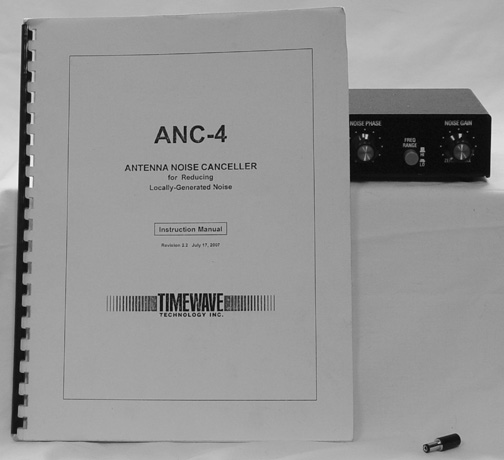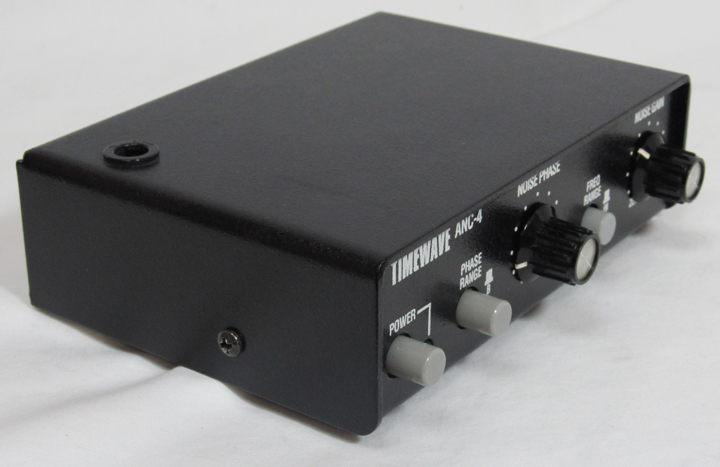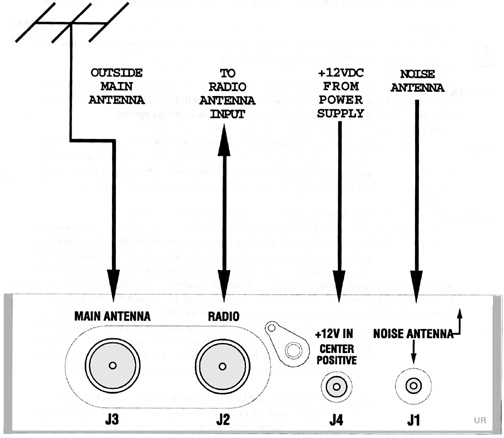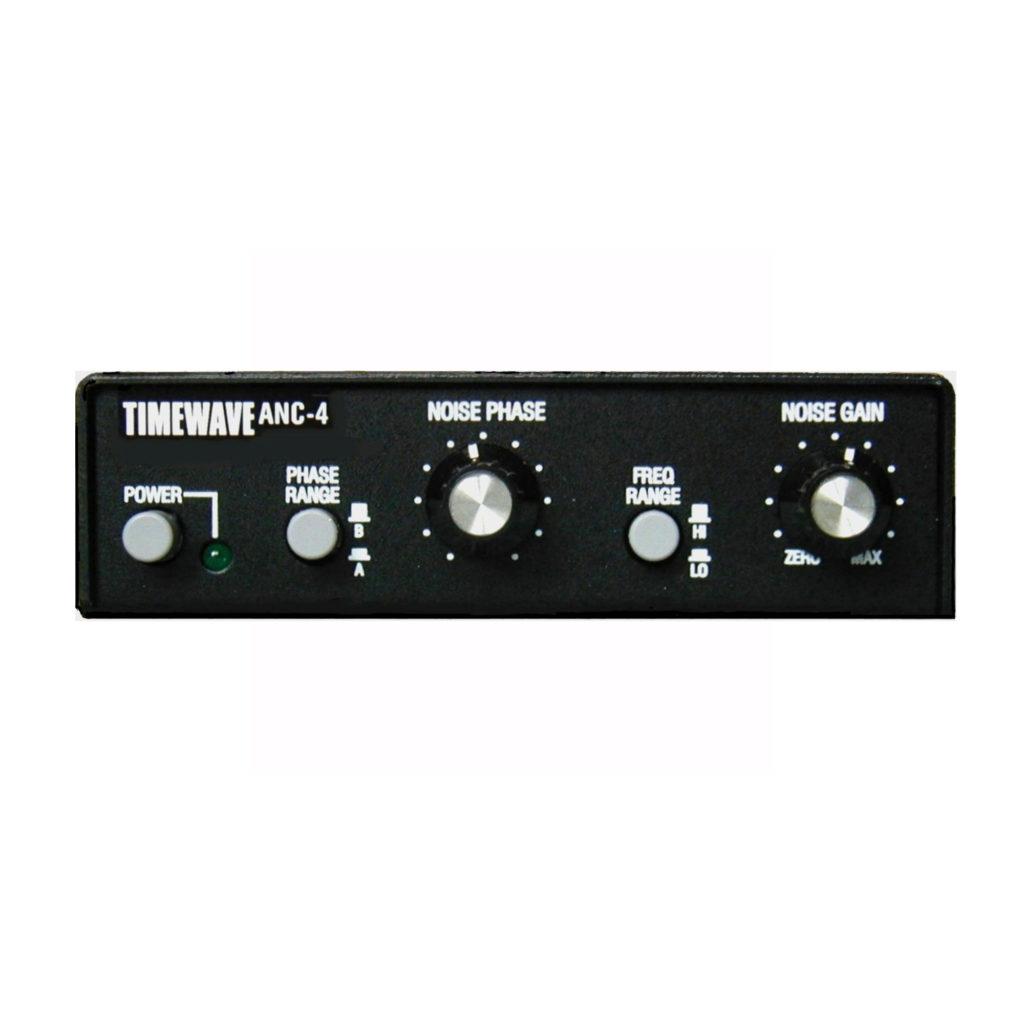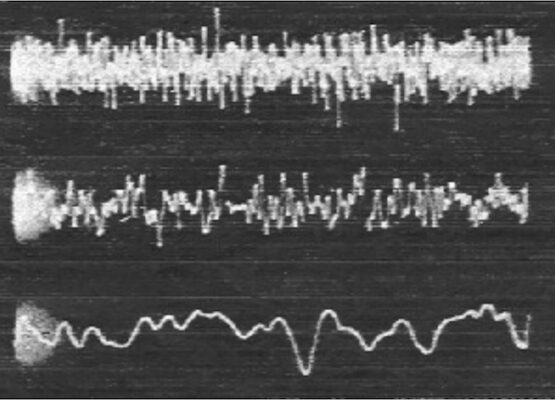Above I’ve created a video demonstrating the “miracle” of phase shift active noise cancelling with the ANC-4 from Timewave
My town had just put-up new LED-based street lighting (a multi-million euro procurement and they bought the “cheap stuff”).
The result?
Almost all HF Bands were completely wiped out from RFI noise generated by the new LED street lights, especially on the 160M through 20M amateur bands (+10DB Noise Floor on 80-Meters).
I was desperate, and depressed, as there was no solution in sight, my rig was effectively dead. Until a dear friend told me to try out phase-shift noise-cancelling, so I bought one of the devices on the market, the ANC-4 from Timewave.
There was quite an initial learning-curve. It took me roughly ten days building & experimenting with different noise antennas, to finally find and create a noise-pickup antenna that works properly for my local noise problem, BUT the results as you will see in the video are dramatic!
This is the principle behind the unit’s operation:
My main RX/TX antenna receives the noise you see in the video (S9 + 10), and my noise-pickup antenna receives the same noise.
The device (TIMEWAVE ANC-4) combines these two signals, and through the potentiometers on the front of the unit, you can shift the phase between them.
With 180 degrees phase reversal, one signal is subtracted from the other, and the result is complete cancellation of the *specific* noise signal, ie [58dB noise signal from main ant] – [58dB noise signal from the noise-rx ant] = 0dB result, ie NO NOISE!
Here, it is important to note that the above method is effective only when the noise is received from the same direction at both antennas. In case noise is being received from different directions from multiple noise sources, it becomes impossible to simultaneously reverse phase and nullify / cancel them all.
Equally important is the proper construction of the noise-pickup RX antenna, which needs to be designed to and tested for the specific source of noise (this may require some experimentation, trial and error). For local noise cancellation applications it should be designed to receive only local and very close noise signals, and in the same phase and polarization with the main antenna, so that no desired DX signals are nulled (ie. designed to be generally inefficient for skywave propagation on the desired band). In short, if the two antennas receive the same signal in relatively similar phase, then the signals can be added or subtracted (nulled/cancelled) by shifting their relative phase and combining them. If one of the two antennas does not receive the signal, then this is not affected by the phase-shift addition or subtraction of signals performed by the device (that is, we cancel only noise and not DX as much as possible).
In my case, I managed to cancel annoying noise signals which were significantly impacting and increasing my receiver’s noise floor (as you can see in the video). However, even though my situation improved dramatically, it did not entirely solve the RFI problem caused by the new LED Street Lighting. Since they are countless noise sources from every direction (as many as the street lamps themselves). What it did do, is help me cancel the closest and steadily strongest sources coming from one direction (the one which is exactly in front of my home) which was the most annoying, and that is how I managed to reduce my noise floor by 3 to 4 S-units on average.
Antenna phasing is very interesting because with simple wire antennas or simple verticals you can create a beam with gain (adaptive array). That is, by shifting the phases of signals from two or more antennas you can add the desired signals (combine signals / diversity reception) and subtract the undesired ones, resulting in significant gain. While you can also steer the newly artificially created lobe to any azimuth direction you want ( without a rotor!! 🙂 ).
This is the same concept behind modern 3D phased array radar.
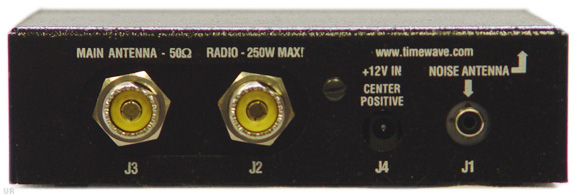

In phased array radar the antenna does NOT rotate, and by phase-shifting & signal combination it creates artificial, electronic and dynamic directionality where it is needed, up to several thousand times a second on multiple thousands of simultaneous targets (Active phased array radar). This concept is also used in all modern digital wireless networks & physical transmission protocols today. Wifi, 3G, 4G, 5G use phasing, active steering, and MiMo (multiple-in, multiple-out).
Amateur radio applications are endless, from noise-cancelling (in my case) to the creation of electronically steerable beams with simple wire antennas (eg 2 simple dipoles, or even 2, 3, or even 4-square-type verticals etc.).
A particularly attractive solution for low bands (160M, 80M, 60M, 40M) where it is not practical and definitely not easy to make a high gain antenna (space, mechanical requirements, cost etc).
Below is the technical definition from Wikipedia:
“Beamforming is the method used to create the radiation pattern of the antenna array by constructively adding the phases of the signals to the desired targets / mobiles, and nullifying the undesired / interfering signal patterns.“
More Reading at:
https://en.wikipedia.org/wiki/Beamforming
https://en.wikipedia.org/wiki/Antenna_diversity
https://en.wikipedia.org/wiki/Active_electronically_scanned_array
https://en.wikipedia.org/wiki/Active_phased_array_radar
https://en.wikipedia.org/wiki/MIMO
Phase-Shift / Active Noise Cancellers / Antenna Phasers & Combiners
-DX Engineering NCC-2 (the “pinnacle” of antenna-phasers)
https://www.dxengineering.com/search/part-type/antenna-phasing-and-noise-cancelling/product-line/dx-engineering-ncc-2-receive-antenna-phasing-systems?autoview=SKU&sortby=Default&sortorder=Ascending
-Timewave ANC-4
https://timewave.com/product/timewave-anc-4-antenna-noise-canceler/
-MFJ Enterprises MFJ-1026
http://www.mfjenterprises.com/Product.php?productid=MFJ-1026
-WIMO QRM-Eliminator
https://www.wimo.com/en/accessories/radio-accessories/qrm-eliminator-various-accessory/qrm-eliminator
-X-phase QRM Eliminator
https://www.tindie.com/products/ra0sms/kit-of-qrm-eliminator-x-phase-1-30-mhz-hf-bands/
or just buy a FLEX Radio or Apache Labs SDR that has antenna phasing & diversity reception built-in 🙂
73 DE SV1DKD

